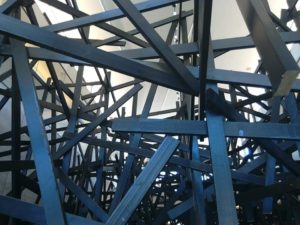Disrupted lives, disrupted spaces

We live to travel. And we have enjoyed our many international moves to different countries.
But what if moving to another country was not a choice. What if you had to go? It’s not something that most of us can really imagine.
Refugees are largely misunderstood and massively mis-represented. The media perpetuates many myths about refugees which mis-informed parochial minds readily absorb.
Funny. Talk to any right wing, conservative minded person, typically someone older with anti migrant sentiments, and they typically have never actually met a refugee. And yet they have clearly formed opinions and sterotypical ideas.
My first first experience of working with refugees was in Zambia. The best part of my job as a Teacher Trainer was travelling out to rural schools to observe and mentor our trainee teachers. The lecturers would be sent out all over the province each semester.
The Meheba refugee camp was established in Zambia in 1971, near the borders of the Democratic Republic of Congo and Angola. The camp was about 75 km from our home. I was sent twice to Meheba refugee camp.
On both visits I was staggered by the sheer scale of the operation. The camp, like so many around the world, is more like a city. People were being given a safe place to rebuild their lives. I met students who were from DRC, Angola and Burundi. Many couldn’t understand me when I spoke English but they understood the language of play. Many were orphaned as well as being refugees. The classrooms were crammed full of kids, trying to make sense of their new surroundings; new place, new people and a new language of instruction (Kikaonde). Who knows what they had witnessed where they have come from. Here at least they were safe. And all of this was happening in a developing country.
Compassion.
By the end of last year, UNHCR had called on Zambia to host over 70,000 people fleeing persistent violence in the Democratic Republic of the Congo.
“UNHCR in Zambia supports the government’s efforts to provide protection and assistance to refugees and asylum-seekers. These include safe and fair access to territory, asylum procedures and rights, inclusion in national services, self-reliance and opportunities to earn a living, and long-term measures such as integration into the host country and possible resettlement in third countries.” (https://www.unhcr.org/zambia)
The experience of working at Meheba refugee camp stayed with me.
When we returned to UK, I secured a job as a Lecturer at a college in Liverpool. I was disgusted at how stories of refugees were being reported in the tabloid press. Worse still, I was saddened to hear people I knew speak about these people with such hatred and a lack of understanding. Like all discrimination, it comes down to ignorance.
Over time I found ways to address issues around the representation of refugees in UK media. I formed a link with an organisation, Refugee Action, who sent refugees and asylum seekers to the college to share their testimonials.
But the most powerful lesson for the students came from a fellow student. He was Somalian. 17. He hadn’t been in Liverpool very long. His personal experience was horrific.
I spoke to him privately and asked him to consider sharing his story with his classmates. He agreed. That day, in the classroom he spoke of the attacks in his village; the fires, the violence, the killings. He ran for his life. The silence in the classroom was deafening. Students had never heard this kind of refugee story.
Recently, on a visit to the Norval Fundation’s gallery in Cape Town, I walked through Serge Alain Nitegeka’s installation ‘Structual Response III’ (2018) The artwork takes the form of a maze, made of wood and painted with acrylic paint. Nitegeka’s work reflects his own experience, as a Burundian. Him and his family had to flee his home country, Burundi during the civil war in 1993. They sought asylym in Rwanda. Then, during the Rwandan genocide in 1994, he fled again. He was able to finally settle in Johannesburg, where he achieved a place at WITS university to study his Fine Arts degree.
His installation is a powerful piece, which provokes thoughts about the displacement of refugees, which so many choose not to understand. “Disirupted lives. Disrupted spaces.” (Norval Foundation)
And for me there was a disrupted view too. As I peered through the many planks of wood, carefully placed by the artist at different angles and different heights, I could see the fancy villas of the wine estate next door. Blue skies. Posh dwellings. Out of reach. I wondered how many times refugees had stood like that on the periphery, outside of society, looking in and hoping for a better life.
The attack which occurred in Christchurch, New Zealand is appalling. Any act of terrorism which results in the killing of innocent, ordinary people is atrocious. But what has made this one upsetting on a different level for me, is that some of the victims were refugees. They moved to be safe. They were not safe.
They moved for a better life. Their lives have been cut short.
All over social media there are ‘stand with’, ‘prayers for’ and sad face emojis in response to reporting of this attack. But it’s not enough. Thoughts and prayers will not save lives. As individuals we need to do more to speak out against all forms of discrimination.
I’m done with politeness. I’m done with hearing people spouting hate speech. It has to be challenged.
Our world needs more compassion.
©Maggie M/Mother City Time
I so agree: Our world doesnt need politeness or hate speech, our world needs more compassion…
Now more than ever!
Thank you for comment, Irina